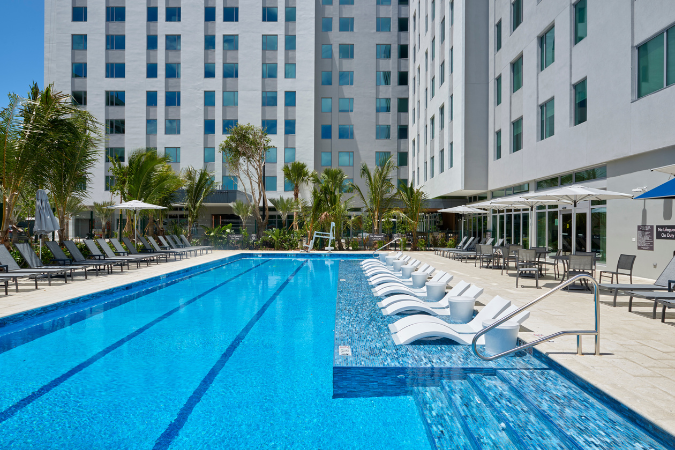6 Ways Nature Influences Hospitality Design & Experience
Written By AD&V®ABOUT THE AUTHOR | AD&V® is dedicated to advanced and energy-efficient sustainable architecture & interior design that enhances people’s experience of the world and improves their lives.
USING NATURE AND ITS ELEMENTS IN HOSPITALITY DESIGN DELIVERS A MORE ENJOYABLE EXPERIENCE FOR GUESTS.
According to studies, interacting with green and healthy atmospheres can boost guests’ positive experiences and influence cognitive, emotional, and physical responses.
Hotels are increasing their efforts to incorporate nature because green environments have been shown to foster positive responses and behaviors that result in a greater sense of well-being for guests.
Here are 6 ways nature influences hospitality design and experience:
1. GREEN EXPERIENCES
One way nature can influence hospitality design and experience is by creating immersive environments. Hotels designed around nature allow guests to enjoy their natural surroundings by providing outdoor areas for relaxation, exercise, dining, and activities. These green experiences encourage guests to engage with nature and foster deep connections with the environment.
2. NATURAL LIGHT
Hotels are using sunlight to their advantage by designing functional spaces that incorporate natural light and implement solar energy. Sunlight creates bright and welcoming spaces that help hotel guests and employees increase productivity, and boost energy. Naturally lit spaces add to a wonderful ambiance, while the use of solar energy leads to increased energy efficiency.
3. NATURAL ELEMENTS & MATERIALS
Using natural and sustainably sourced materials in hotel design provides guests with better sustainable experiences and increased comfort. Some examples include using natural fibers for bed comfort, wooden shutters for shade, and creating green walls with plants that reduce temperatures and purify the air. Hotels that celebrate natural and sustainably sourced materials also convey their commitment to eco-conscious practices.
4. OUTDOOR HEALING
Hotels are also being designed to include outdoor therapeutic spaces. Sensory gardens, for example, can be very therapeutic for people suffering from sensory problems. Therapeutic areas are designed to facilitate interaction with the healing elements of nature that can create calming responses that are restorative and conducive to emotional, physical, and mental well-being.
5. FLORA & FAUNA
Including flora and fauna in a hotel’s design also influence the user experience. Hotels are implementing gardens, birdhouses, and other elements that allow the local flora and fauna to flourish and thrive. The smell and sound of flowers and local wildlife are powerful ways to enhance the natural experience by letting guests enjoy nature’s beauty, tranquility, coolness, and aromas.
6. NATURAL FOODS
Natural outdoor spaces allow hotels to grow, harvest, and prepare their food in gardens or even farms. Hotels that have gardens or farms create an opportunity for guests to have access to locally grown ingredients and foods. This can significantly elevate the guest experience and deepen guests’ understanding and connection to food as part of the local culture.
CREATING A NATURAL, IMMERSIVE EXPERIENCE
Nature is influencing hospitality design and experience through green environments, natural elements and materials, therapeutic spaces, flora, fauna, and natural foods. These strategies connect guests to the local environment and allow them to immerse themselves in nature while enhancing their wellness. Nature’s power to make guests feel healthy and happy, and its role in our well-being, highlights a unique opportunity for hotels to improve the overall guest experience.
FURTHER READING: 4 WAYS TO DESIGN A UNIQUE & MEMORABLE HOTEL GUEST EXPERIENCE

